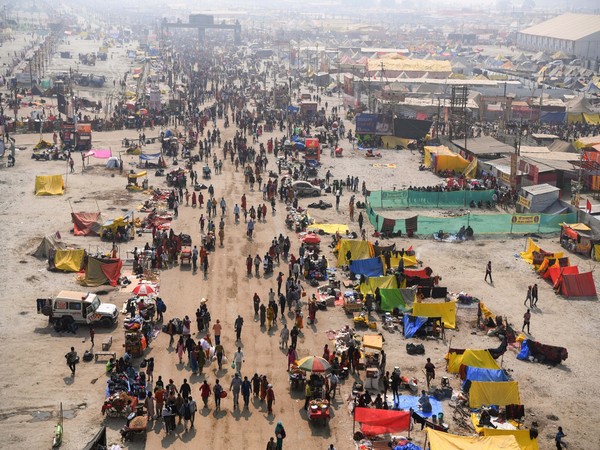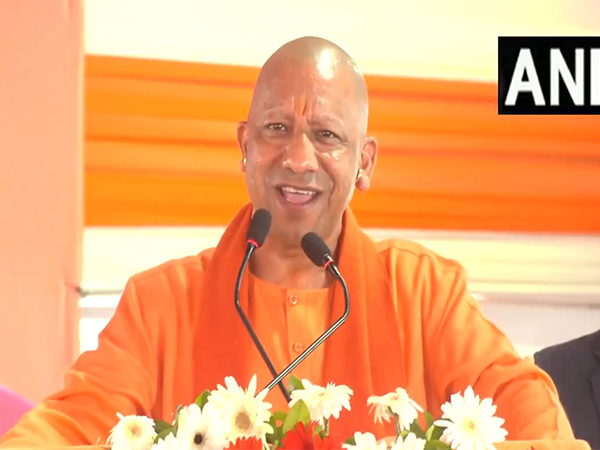Greater efforts needed to get routine immunization back to pre-COVID-19 times: WHO
Jul 16, 2022

New Delhi [India], July 16 : The World Health Organization on Saturday called for greater efforts in the South-East Asia Region to revive routine immunization rates to pre-COVID-19.
"Commendably the Region has administered 3 billion doses of COVID-19 vaccines to date, since January 2021 when the first dose of vaccine was administered in the South-East Asia Region. As we focus on further scaling up COVID-19 vaccination coverage, we must also do all we can to ensure no child is deprived of life-saving vaccines offered under routine immunization services," Dr Poonam Khetrapal Singh, Regional Director WHO South-East Asia said.
She pointed out that many countries had demonstrated that routine immunization can be maintained along with the COVID-19 vaccination.
Bangladesh, Maldives, Sri Lanka and Thailand have maintained high vaccination rates of over 95 per cent Diphtheria tetanus toxoid and pertussis (DTP3) coverage throughout the COVID-19 pandemic.
Meanwhile, Bhutan witnessed a slight decline in 2020 but surpassed its pre-pandemic coverage of 97 per cent to record 98 per cent DTP3 coverage in 2021. Globally, DTP3 (third dose of vaccines for diphtheria, tetanus and pertussis) in one-year-old children, is a proxy indicator for immunization coverage.
On other hand, Nepal substantially revived routine immunization coverage for DTP3 from 84 per cent in 2020 to 91 per cent in 2021. These six countries have also achieved high COVID-19 vaccination coverage.
India also witnessed a decline in routine immunization coverage in 2020 and Timor-Leste, another Asian country, seems to have stabilized in 2021 indicating programme recoveries as well.
In 2021 India provided close to 2 billion doses of COVID-19 and other childhood vaccines taken together, over 5 times more vaccines administered in the country during the year than in 2020.
All countries in the South-East Asia Region focused on routine immunization while prioritizing essential services during the pandemic and concerted efforts continue to be made to scale-up vaccination coverage, with a focus on identifying and vaccinating 'missed children'.
Efforts for measles and rubella elimination, a flagship priority in the Region, continued during the pandemic. Nepal substantially increased the coverage for the second dose of measles and rubella vaccine from 76 per cent in 2019 to 87 per cent in 2021. Bangladesh, Bhutan, Maldives, and Sri Lanka maintained their respective coverage rates throughout the pandemic.
To revitalize routine immunization coverage following the COVID-19 pandemic, WHO convened a South-East Asia Regional Working Group on Immunization in March this year focusing on programme intensification. Strengthening catch-up campaigns, tracking unvaccinated and under-vaccinated children, combining COVID-19 vaccination with routine immunization, training of health workers and addressing concerns of communities, were stressed.
However, concerns and challenges remain. Routine immunization coverage dropped in Myanmar, also due to the political situation and in DPR Korea as the country closed its borders including for essential medicines and supplies.
"WHO is cognizant of the efforts and is supporting the member states to improve routine immunization coverage. With stepped-up efforts in recent months, we hope to see a speedy scale-up of DTP3 coverage to the pre-pandemic level of 91 per cent in 2019 from 82 per cent in 2021 and second dose measles and rubella vaccine coverage to beyond 83 per cent in 2019 from 78 per cent in 2021," the Regional Director said.
In India, periodic intensification of routine immunization is carried out through 'Mission Indradhanush'. WHO has supported detailed mapping and categorization of low coverage areas in states; guiding short and medium-term plans to improve coverage in all such areas.
WHO is providing technical support to Timor-Leste to boost routine immunization and COVID-19 vaccine coverage in hard-to-reach areas, enhance management capacities, and strengthen cold chain and data management systems at the sub-national level.



















